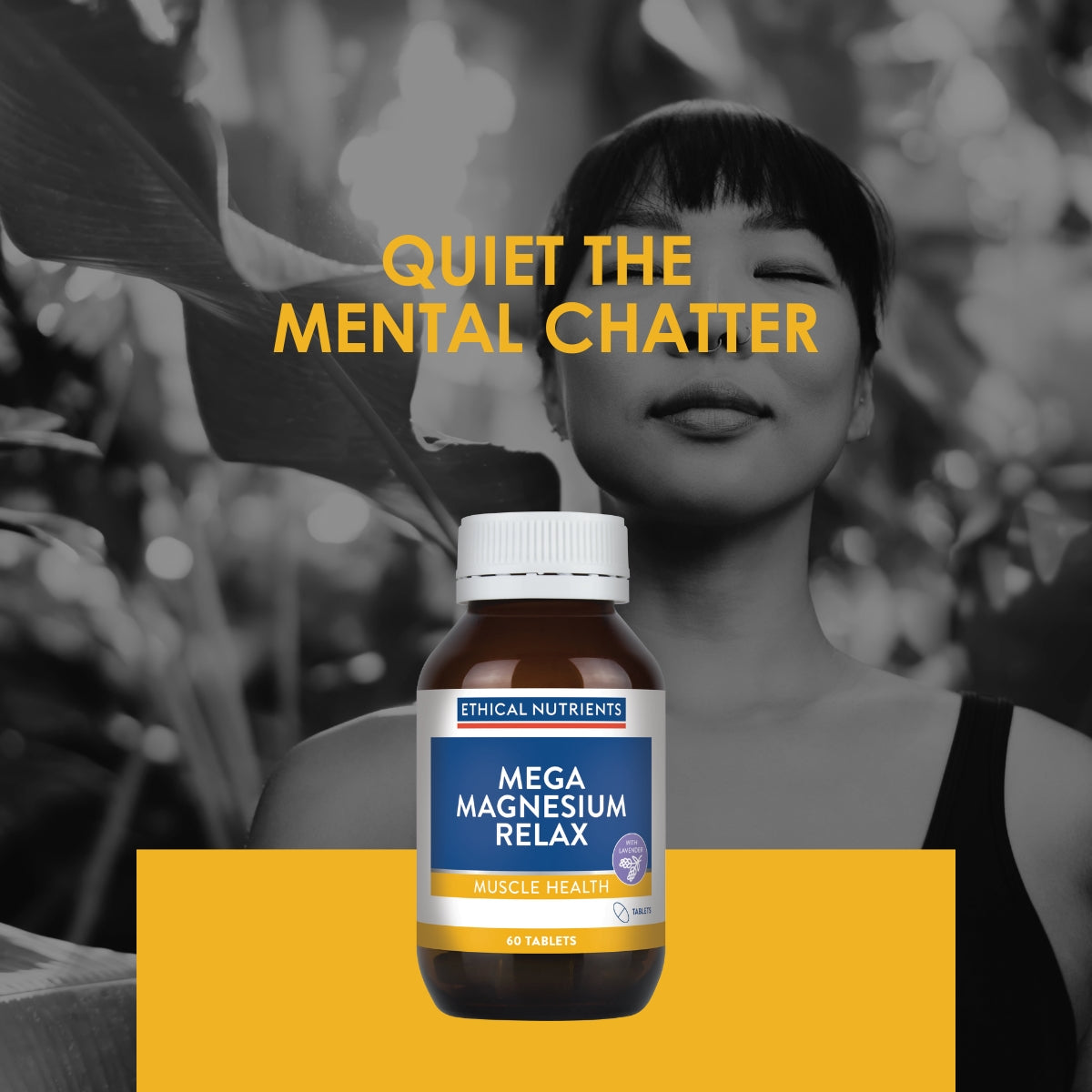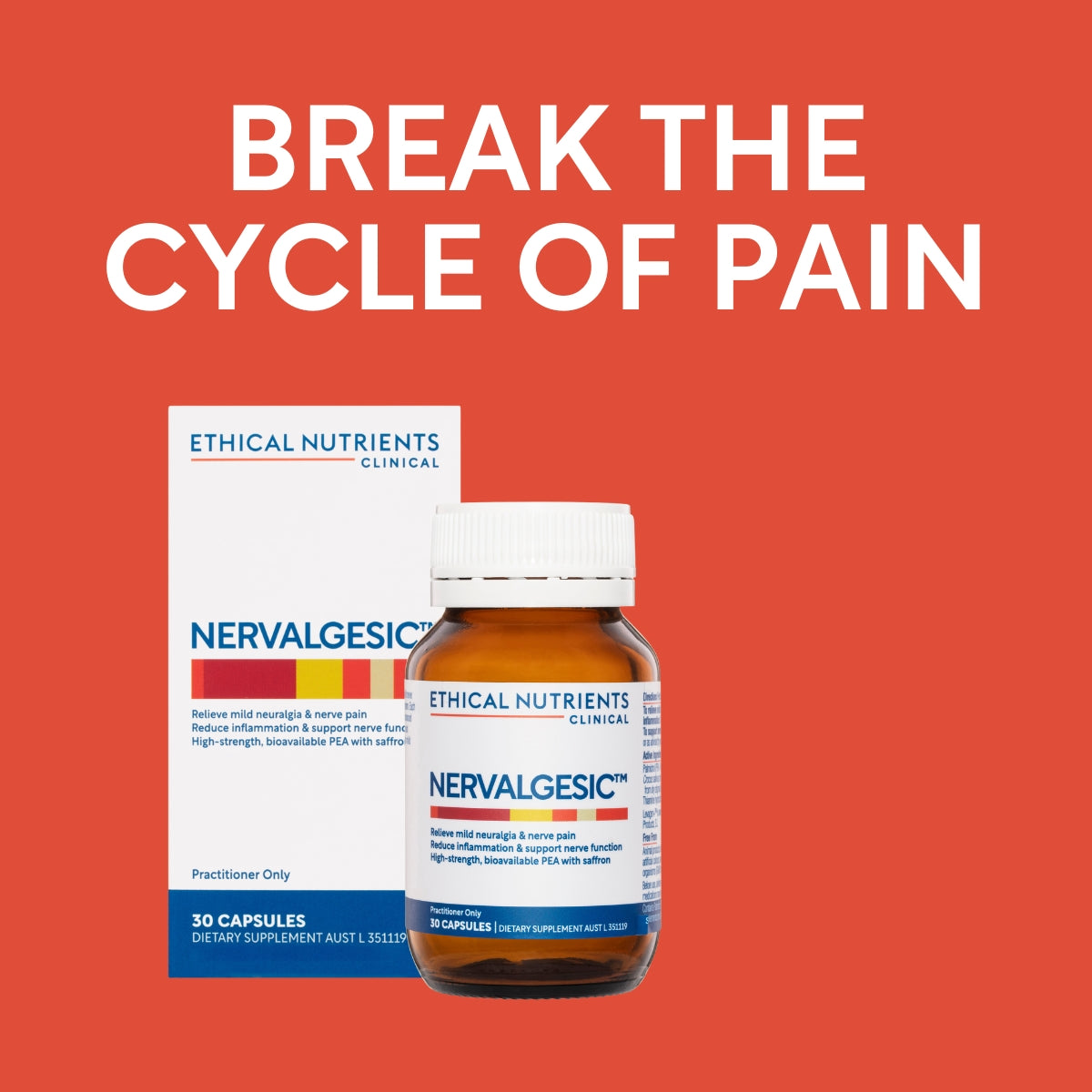Whether you’re an athlete, regular exerciser, or someone who has started to get physically active after a long period of being idle, you’re likely to experience muscle soreness and cramps at one point or another. You might have started a new activity, changed up your exercise routine or pushed yourself a bit harder than usual causing your muscles to ache and stiffen for a few days afterwards and this might be derailing your fitness goals. Magnesium is a key nutrient for muscle health and function, so ensuring you obtain adequate amounts may help with your recovery and performance.
Sore muscles and cramps with exercise – what causes them?
Muscle pain occurring a day or two after exercise is known as delayed onset muscle soreness (DOMS) and can be experienced by anyone – whether you’re a competitive athlete or casual exerciser. The cause of DOMS is likely due to temporary muscle damage and inflammation.1 When you exercise at a high intensity, it causes microscopic tears in your muscle fibres. The body responds to this temporary damage by launching an inflammatory response which further contributes to the discomfort.1 Muscle soreness after exercise usually resolves itself within a few days to a week but during that time, motion and muscle performance can be reduced. Even washing your hair or walking up or down stairs can feel like torture.
Muscle cramps, or sudden involuntary (and often painful) muscle contractions, that occur during or after a bout of exercise can be a common experience for people of all fitness levels. The cause of exercise-induced muscle cramps is debated but thought to be due to altered nerve and muscle function as a result of fatigue in the muscle being exercised.2 When a muscle is tired, it can affect the body’s normal ability to turn off the contraction and return to its relaxed state.2 Risk factors for muscle cramps include tight inflexible muscles, mineral and electrolyte imbalances and poor physical condition.3
The role of magnesium in muscle recovery
The body needs magnesium for hundreds of tasks. When it comes to muscle recovery, magnesium may help in a number of ways. Magnesium is needed for normal muscle function and helps your muscles relax after contraction. It also plays a pivotal role in energy production and oxygen uptake, while supporting heart health; all of which may contribute to exercise performance.
Strenuous exercise can deplete the body of magnesium by increasing urinary and sweat losses and boosts magnesium requirements by 10-20%.4 There is evidence that even marginal magnesium deficiency impairs exercise performance and amplifies the negative consequences of exercise, like oxidative stress.4 There also appears to be a positive association between magnesium levels and various muscle performance indicators including grip strength, lower leg power, knee extension torque, ankle extension strength, isometric trunk rotation and jumping effectiveness.5 A number of studies have found that the need for magnesium grows as an individual’s physical activity level increases.5
Since muscle tissue relies on magnesium to help it contract and relax, magnesium imbalance may play a role in making the body more susceptible to muscle cramps.
Tips and tricks for muscle recovery
There are many ways you can alleviate muscle soreness and support recovery after exercise to help you stay on track with your fitness journey:
Don’t skip the warm up
Warm up before your workout and cool down afterwards – try 10 minutes of light cardio and a series of stretches post-workout to increase blood flow, help deliver nutrients to your muscles and help the sports recovery process.
Foam rolling
Foam rolling can be used as an effective recovery tool to relieve muscle tension and soreness after exercise. It involves using a special foam roller to help release muscles and increase your range of motion.
Stay hydrated
It’s important to replace the water and electrolytes lost through sweating during a workout to support the body’s recovery.
Don’t forget protein
Protein provides the building blocks, known as amino acids, needed to repair damaged muscle tissue. Include a variety of red meat, poultry, eggs, fish, tofu, beans, nuts and nut butters in your daily diet, especially when you’re exercising.
Apply ice or try ice baths
Cold water immersion may help you recover faster and reduce muscle pain and soreness after training sessions. Applying ice to a muscle cramp can also help the muscle relax – they don’t call it the ‘cool down’ period for nothing.
Light active recovery
If you’re feeling sore after a strenuous workout it can be tempting to put your feet up. But it’s usually recommended to keep moving (at a lesser pace) to promote blood flow and reduce soreness. This could be going for a walk, swimming laps, going for a bike ride or doing yoga.
Don’t scrimp on sleep
Sleep is a truly regenerative process where the body is able to restore and rebuild. The average adult needs around 8 hours according to the Sleep Health Foundation, though different people may function well on a little more or less.
Look at your magnesium intake
Increase magnesium rich foods and consider taking a magnesium supplement to support muscle health and function and reduce muscle cramps. Physically active people or those over 50 might find it difficult to get the higher magnesium levels they need from food alone and may consider taking a high quality magnesium supplement. Having a warm bath with quality magnesium flakes/salts can also help alleviate aches and pains.
Foods high in magnesium6
Some of the richest sources of magnesium to include in your diet are:
- Green leafy vegetables such as spinach and swiss chard
- Brazil nuts, almonds, cashews and hazelnuts (and nut butters)
- Brown rice
- Oats
- Fish
- Avocado
- Peanuts
- Chickpeas
- Bananas
If you’re very physically active or experiencing regular muscle aches, pain or cramping, you might find benefit from taking a high quality magnesium supplement. The Ethical Nutrients Mega Magnesium range uses high strength, easily absorbed Meta Mag®, in a variety of combinations and formats to suit your individual health goals.
References
- Lewis PB et al, 2012, ‘Muscle soreness and delayed-onset muscle soreness’. Clin Sports Med, vol 3, no 2, pp 255-62
- Sports Dieticians Australia, 2017, Muscle cramps and how to reduce your risk, viewed 9 June 2023, <https://www.sportsdietitians.com.au/sda-blog/reduce-risk-muscle-cramps/>
- Better Health, Muscle cramp, viewed 9 June 2023, <https://www.betterhealth.vic.gov.au/health/conditionsandtreatments/muscle-cramp>
- Nielsen F et al 2006, ‘Update on the relationship between magnesium and exercise’, Magnes Res, vol 19, no 3, pp 180-9
- Zhang Y et al, 2017, ‘Can Magnesium Enhance Exercise Performance?’ , Nutrients, vol 9, no 9, p 946
- Higdon J, 2019, Magnesium, viewed 9 June 2023, <https://lpi.oregonstate.edu/mic/minerals/magnesium#food-sources>






